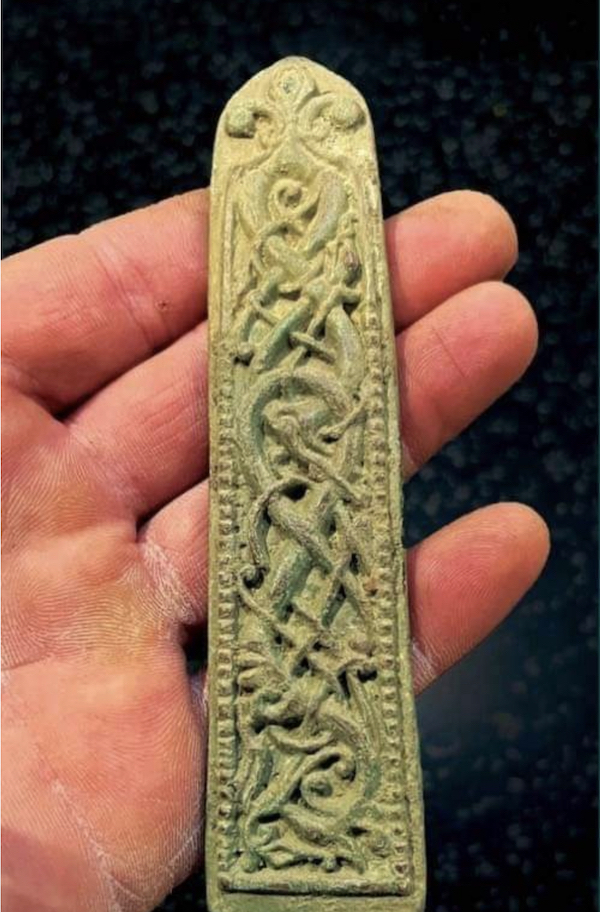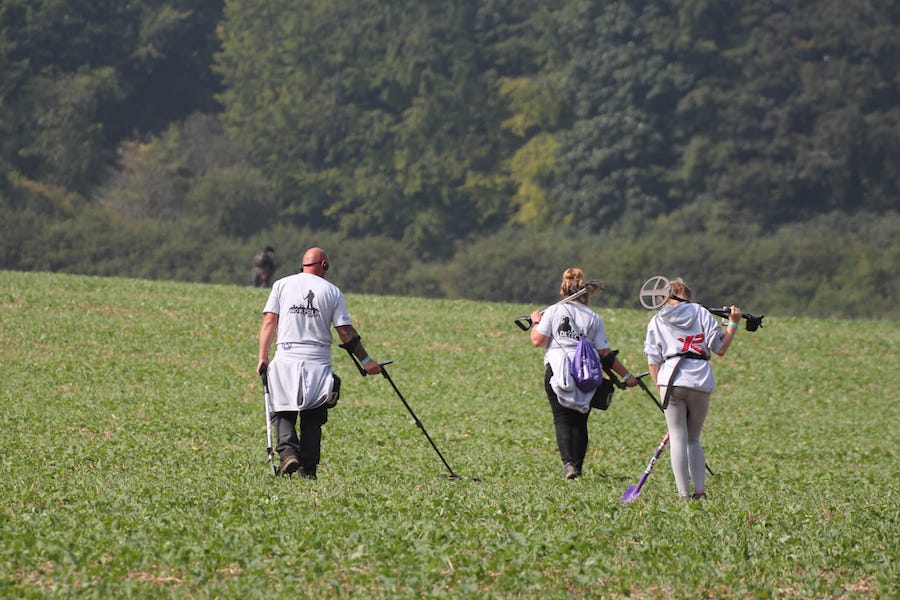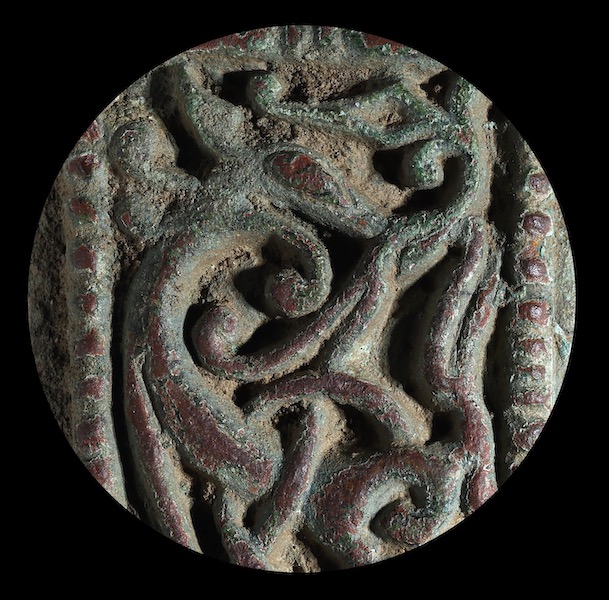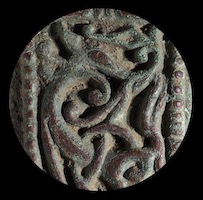
LONDON – An 11th-century bronze Viking die that was discovered in a field in Norfolk, England by a metal detectorist achieved a hammer price of £15,000 (about $19,300) at the Noonans Mayfair auction house on July 18 in its Ancient Coins and Antiquities sale. It was bought by a collector in the UK.
Jason Jones, age 44, who works in the construction industry, bought a metal detector for his son Rio’s 15th birthday four years ago and within a few weeks, the whole family, including his two daughters Ela and Lia, were detecting every weekend.

Jones recounted: “On January 29 of this year, my wife Lisa and I were searching on a field in Norfolk which had produced two Medieval silver coins on a previous visit. I had forgotten to charge my main detector, so had to use my backup machine, an older Minelab Vanquish 540. I returned to the area where the coins were found and got a loud signal, and at a depth of just two inches found an unusual bronze object. Lisa came over and was speechless when she saw it. Neither of us had any idea what it could be, but that evening after posting a picture on Facebook we realized it was Viking in date and notified the local archaeologist to have it recorded.”
Noonans Specialist in Coins and Artefacts Nigel Mills said: “The object is a die of Pressblech type, which is 14 centimeters [5.5 inches] in length and tapers from 3.2-2.6 centimeters [1.25-1 inch] in width and weighs 186 grams [6.5 ounces], with the design on one side in high relief. This is an intricate 11th-century Urnes-style ornamentation, possibly representing the world tree Yggdrasil with the monstrous serpent Nidhogg intertwining within its roots. At the bottom is a fleur-de-lis, which appears to form the tail of the serpent.”

He continued: “The die would have been used to make a stamped foil of thin metal, which would display the pressed-out image. From its find spot, the date and design, it is possible that the die was used on a Viking iron helmet to make ornamentation to the cheek guards.”
Jones is going to share the money with the landowner and use his share to support his family.


